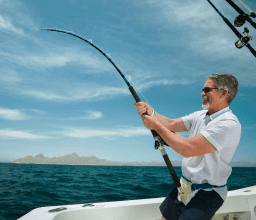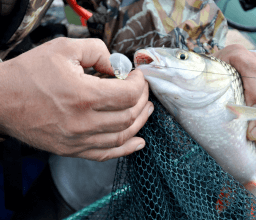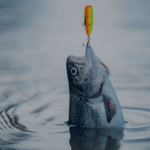Crappie: The Ultimate Guide to Locations, Lures, and Strategies
Crappie are among the most popular panfish in the United States, prized for their abundance, delicious taste, and the fun challenge they offer anglers of all skill levels. This guide details the best locations for crappie fishing, the most effective lures, and proven strategies to help you catch more crappie.
Best Locations for Crappie Fishing
Crappie thrive in lakes, reservoirs, and rivers across the U.S., but certain destinations are legendary for both the size and numbers of fish they produce:
Top Crappie Destinations
⦁ Grenada Lake, Mississippi: Often considered the best crappie lake in the country, Grenada is known for producing large numbers of trophy-sized crappie, with many fish weighing over two pounds[1][2].
⦁ Kentucky Lake, Kentucky/Tennessee: This massive reservoir is famous for both the quantity and quality of crappie, making it a top destination for anglers seeking big slabs[2].
⦁ Sardis Lake, Mississippi: Another Mississippi hotspot, Sardis Lake consistently yields large crappie and is popular for both numbers and size[3][2].
⦁ Lake Fork, Texas: Renowned for its bass, Lake Fork is also a crappie haven, producing impressive fish and offering excellent habitat[1][3][2].
⦁ Lake D’Arbonne, Louisiana: A 15,000-acre lake in northern Louisiana, D’Arbonne is known for its large crappie and strong populations of other game fish[1][2].
⦁ Lake of the Ozarks, Missouri: With over 54,000 acres, this lake is a favorite for both quantity and quality of crappie[2].
⦁ Lake Eufaula, Oklahoma/Alabama: This large reservoir is known for its abundant crappie population and excellent fishing conditions[2].
⦁ Clear Lake, California: Not just for bass, Clear Lake offers world-class crappie fishing, with record-sized black crappie caught in recent years[1].



Best Lures for Crappie
Selecting the right lure is crucial for crappie fishing success. Here are the top lures that consistently catch crappie nationwide:
⦁ Jigs: Small jigs (1/32 to 1/8 ounce) are a crappie staple. Soft plastics in chartreuse, white, or pink are especially effective, and live bait like minnows can be added for extra appeal[4][5][6].
⦁ Crankbaits: Mini crankbaits, such as the Rapala Ultra Light Shad or Husky Jerk, are excellent for trolling and mimic the shad and minnows crappie feed on[7][4].
⦁ Spinners: In-line spinners like Mepps or Rooster Tails produce flash and vibration, making them great for low-light conditions or stained water[5].
⦁ Spoons: Small spoons are effective for vertical jigging, especially when crappie are suspended in deeper water[4][6].
⦁ Puddle Jumper: This classic soft plastic lure is especially productive in spring and can be fished beneath a bobber or jigged slowly[7].
⦁ Live Bait: Minnows are a go-to for many anglers, either fished alone or tipped on a jig[4][5].
Best Strategies for Crappie Fishing
Understanding crappie behavior and seasonal patterns is key to maximizing your catch:
Seasonal Tactics
Season Location & Depth Best Lures/Tactics
Spring Shallow, near cover Jigs under floats, Puddle Jumpers, live minnows
Summer Deeper, suspended fish Trolling crankbaits, vertical jigging, small spoons
Autumn Weed edges, mid-depth Spinners, crankbaits, jig-and-bobber combos
Winter Deep, slow-moving water Vertical jigging with spoons, micro jigs, live bait
General Tips
⦁ Find Structure: Crappie love submerged timber, brush piles, docks, and weed beds. Focus your efforts on these areas for the best results[1][4][5].
⦁ Work the Water Column: Crappie often suspend at different depths. Use slip floats or countdown lures to find the feeding zone[6].
⦁ Slow Presentations: Crappie have soft mouths and can be finicky. Slow retrieves and subtle jigging motions are often most effective[4][5].
⦁ Trolling: Covering water with small crankbaits or bait-tipped spinners is a great way to locate active schools, especially in summer and fall[7][4][6].
⦁ Watch for Suspended Fish: Crappie often suspend above structure or in open water. Use electronics or experiment with lure depth to locate them[6].
⦁ Light Tackle: Use light line (2-6 lb test) and sensitive rods to detect subtle bites and avoid tearing hooks from crappie’s delicate mouths[7][5].
Conclusion
Crappie fishing offers excitement and reward for anglers across the country. By targeting the best locations, using proven lures, and adapting your strategies to seasonal patterns and local conditions, you’ll increase your chances of landing a cooler full of slabs. Whether you’re jigging brush piles in Mississippi or trolling weed edges in Missouri, crappie fishing remains one of America’s favorite pastimes[1][2][4].
- https://www.wired2fish.com/crappie-fishing/top-25-crappie-fishing-destinations-in-america
- https://pineoutdoors.store/blogs/news/most-popular-crappie-lakes-in-the-united-states
- https://www.youtube.com/watch?v=5qed-lXkxOA
- https://fishingbooker.com/blog/crappie-fishing/
- https://www.curated.com/journal/512000/how-to-fish-for-crappie
- https://www.sail.ca/blog/crappie-fishing-techniques-and-tips/
- https://www.outdoorlife.com/gear/best-crappie-lures/


